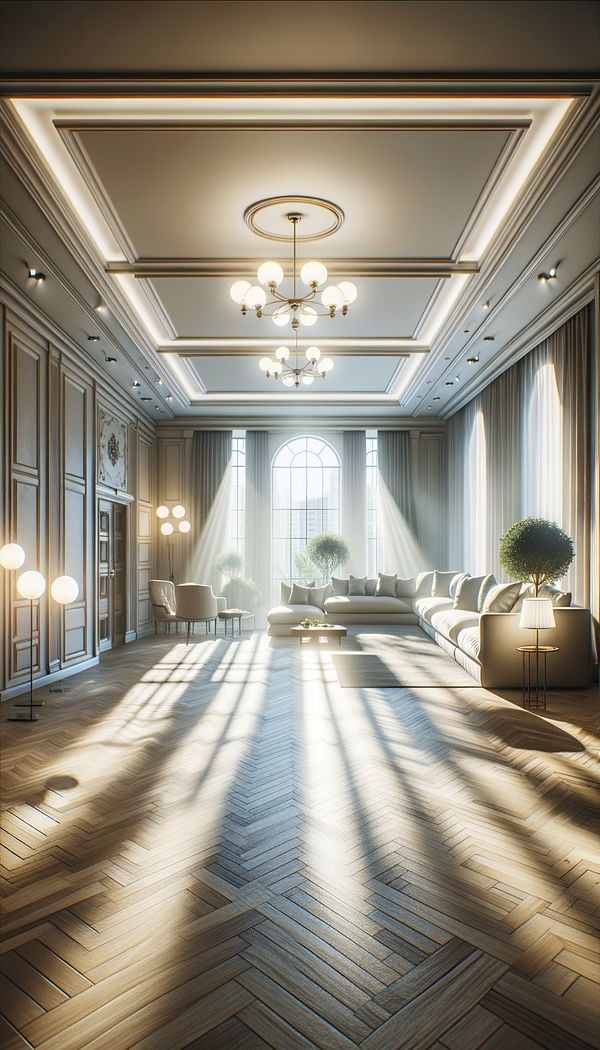What is Ambient Lighting?
Ambient lighting is the base layer of light in a space that provides overall illumination.
Description
Ambient lighting, often referred to as general lighting, is the foundational layer of illumination in any space. Its primary role is to ensure that a room is sufficiently lit for safety and navigability. Unlike task or accent lighting, which serve specific purposes such as highlighting artwork or aiding in reading, ambient lighting is about creating a uniform level of brightness throughout a space.
This type of lighting is achieved through a combination of natural light from windows and doors and artificial light sources like overhead lights, wall-mounted fixtures, and floor lamps. The goal is to fill the space with soft, diffused light that minimizes shadows and provides a comfortable level of visibility. In designing a lighting plan, ambient lighting is the first layer to consider, upon which task and accent lighting can be added to address specific needs or enhance the room’s aesthetics.
Incorporating dimmer switches or choosing bulbs with adjustable color temperatures can also enhance the ambiance of a room, allowing for variations in light intensity and color to match different times of the day or specific activities. Effective ambient lighting combines aesthetics with functionality, creating an inviting space that also meets practical needs.
Usage
In a living room, a combination of ceiling-mounted fixtures and wall sconces can provide ambient lighting, with the addition of floor lamps for a more diffused glow. In a kitchen, overhead recessed lighting or a central ceiling light can serve as the primary source of ambient light, while in a bedroom, a central pendant light or a series of flush-mounted ceiling lights can fulfill this function.
FAQs
-
What is the difference between ambient lighting and task lighting?
Ambient lighting provides a base level of illumination for a space, ensuring it is safely navigable and comfortably lit, whereas task lighting is more focused, designed to provide adequate light for specific activities such as reading, cooking, or working at a desk.
-
Can natural light be considered ambient lighting?
Yes, natural light coming from windows or skylights is an important component of ambient lighting during daytime. It complements artificial light sources to create a well-lit space.
-
How can I control ambient lighting in my space?
Ambient lighting can be controlled using dimmer switches, choosing light bulbs with adjustable color temperatures, or incorporating smart home technology for more precise control over light intensity and color based on time of day or activity.
Practical Application
When planning ambient lighting for a space, start by taking advantage of natural light sources and then supplement with artificial lighting as needed. Choose fixtures that evenly distribute light to minimize shadows and consider incorporating dimmers or adjustable bulbs to create varying atmospheres. Remember, ambient lighting should provide a comfortable level of brightness without being overpowering.
-
VistaA planned view or outlook, especially one framed or enhanced by architectural or landscape features.
-
Gothic RevivalGothic Revival is a design style that reinterprets the architecture, interiors, and decorative arts of the Gothic period.
-
SymmetrySymmetry in interior design refers to a balanced distribution of visual weight on either side of a central axis.
-
SconceA sconce is a wall-mounted light fixture.
-
ContemporaryContemporary refers to what is current and popular in interior design at any given time.
